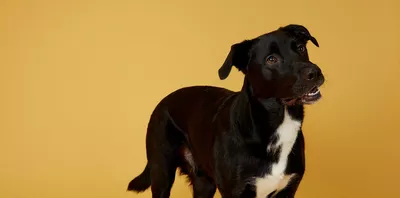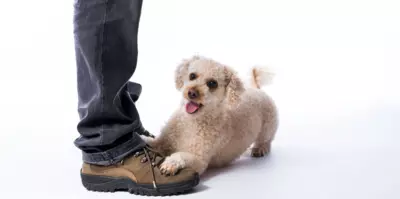Why Do Dogs Twitch In Their Sleep?
- 21 Sep 2023
- 3m read

Ah, the enigmatic world of canine slumber. When you catch your dog twitching in their sleep, it's natural to wonder if this is just another adorable quirk or something to be concerned about. Let's delve into the fascinating realm of dogs and their sleep twitches
Is It Normal For Dogs to Twitch In Their Sleep?
First and foremost, it's important to know that twitching during sleep is entirely normal for dogs. Just like humans, dogs go through different sleep stages, one of which is the REM (Rapid Eye Movement) stage. During REM sleep, your dog's brain is highly active, and this is when those intriguing twitches and movements occur.
Why do these twitches happen? Well, it's believed that during REM sleep, dogs are engaged in dreams, much like we are. These dreams can range from chasing a ball to, perhaps, reliving a delightful day at the park. These dreams often manifest as those twitchy movements you observe.
Should I Wake My Dog Up If He’s Twitching?
Imagine if someone were to rudely awaken you from a fantastic dream; you'd probably be a bit disoriented, right? Well, the same applies to your pup.
It's generally not recommended to wake your dog up if they're twitching during sleep. Why? Interrupting their dream-filled slumber can be disorienting for them and may lead to unnecessary stress. Just like we humans enjoy our restful sleep, dogs need it too, and their dreams are a part of that essential rest.
However, there are exceptions to every rule. If your dog's twitching seems to be escalating to violent movements or is accompanied by distressed vocalisations, it's crucial to assess the situation carefully. In such cases, gently waking your dog may be appropriate to ensure their safety. But remember, these instances are relatively rare.
Is My Dog Having a Seizure or Dreaming?
Now, let's address a significant concern that many pet parents have when they witness their dogs twitching in their sleep: could it be a seizure? It's vital to differentiate between normal sleep twitches and signs of a seizure to provide the best care for your furry friend.
Sleep twitching
As mentioned earlier, sleep twitches are typically harmless and occur during the REM stage of sleep. These twitches are usually gentle and sporadic, resembling the movements your dog might make while awake. They're often accompanied by relaxed facial expressions and normal breathing patterns.
Seizures
Seizures, on the other hand, are neurological events that can occur during wakefulness or sleep. During a seizure, your dog may exhibit more intense and uncontrolled movements. Common signs of a seizure include rigid muscles, salivation, loss of consciousness, and even involuntary urination or defecation. Unlike the gentle twitches of dreams, seizures are typically distressing for both the dog and the owner.
So, how can you distinguish between dreaming and a seizure? Here are some key differences:
Duration
Sleep twitches are brief and may last only a few seconds to a minute. Seizures tend to be more prolonged, lasting for several minutes.
Consciousness
Dogs experiencing sleep twitches remain asleep and unaware of their movements. During a seizure, a dog may lose consciousness and appear disoriented when it ends.
Muscle rigidity
Seizures often involve more rigid muscle contractions, while sleep twitches are softer and less controlled.
Recovery
After a seizure, dogs may experience a postictal state, characterised by confusion and disorientation.
After a dream, dogs usually continue sleeping peacefully.
If you're ever uncertain about whether your dog is experiencing a seizure or simply dreaming, it's best to consult with your vet. They can provide expert guidance and rule out any underlying health issues.




.png)